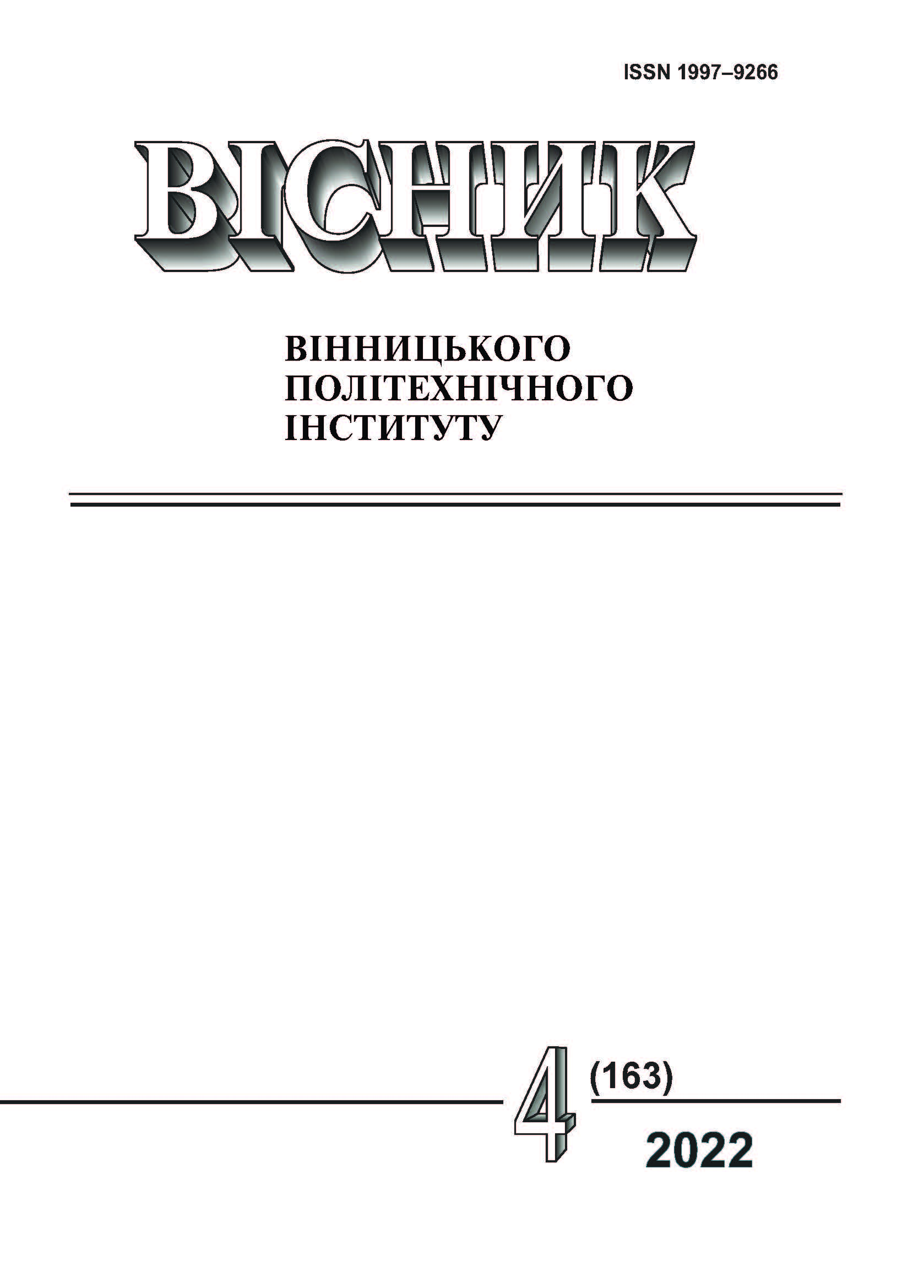ЗАСТОСУВАННЯ МЕТОДУ ГОЛОВНИХ КОМПОНЕНТ В ЗАДАЧІ АНАЛІЗУ СПЕКТРІВ ВІЛЬНИХ КОЛИВАНЬ
DOI:
https://doi.org/10.31649/1997-9266-2022-163-4-6-12Ключові слова:
розподіл простору вхідних даних, інформативні параметри, метод головних компонент, спектральний аналіз, неруйнівний контрольАнотація
Представлено основні методи, що застосовуються для аналізу, розподілу та класифікації простору вхідних даних. Проаналізовано і визначено головні аспекти використання вказаних методів. Визначено, що найприйнятнішим у цьому дослідженні є застосування методу головних компонент. Описано можливі алгоритми методу головних компонент і застосовано комбінацію цих алгоритмів для задачі розподілу вхідних даних під час аналізу сигналів та їх спектрів, отриманих в процесі неруйнівного контролю методом вільних коливань. Метою статті є дослідження можливості зменшення вектора інформативних ознак методом головних компонент без втрати якості розпізнавання стану об’єктів. Об’єктами дослідження можуть бути складові електродвигунів (шихтований магнітопровід), деталі літальних апаратів, виготовлені з композитних матеріалів та інші конструкції, що потребують аналізу неруйнівними методами контролю. Досліджено спектри, зняті під час неруйнівного контролю методом вільних коливань зразків вуглепластикових панелей з дефектної та бездефектної зон зразка. Визначено максимальну кількість головних компонент — дві головні компоненти, та значення максимальних дисперсій цих головних компонент для сформованого набору вхідних значень амплітуд для трьох, п’яти і десяти гармонік. Для аналізу якості розділення простору вхідних даних на класи (бездефектної та дефектної зони зразка) використано міру відстані Махаланобіса. Відмічено підвищення якості розділення значень з ушкодженої і неушкодженої зон зразка на два класи. Отже, застосування методу головних компонент, в цьому дослідженні, дозволило підвищити надійність розпізнавання стану об’єктів.
Посилання
В. М. Коцовський, Теорії розпізнавання образів, лекції. Ужгород: Методичні праці кафедри інформаційних управляючих систем та технологій, 2014, 24 с. [Електронний ресурс]. Режим доступу: https://dspace.uzhnu.edu.ua/jspui/handle/lib/16460 .
И. А. Биргер, Техническая диагностика: Надежность и качество. М.: Машиностроение, 1978, 240 с.
В. Є. Бахрушин, Методи аналізу даних : навчальний посібник для студентів. Запоріжжя: КПУ, 2011, 268 с.
I. T. Jolliffe, and J. Cadima, “Principal component analysis: are view and recent developments,” Philosophical Transactions of the Royal Society, A 374: 20150202, 2016. https://doi.org/10.1098/rsta.2015.0202 .
З. П. Ненова, «Идентификация дефектов в ИИС вихретокового неразрушающего контроля.» дис., Киев, 1990, 282 с.
Steven M. Holland, Principal components analysis (PCA). Department of Geology, University of Georgia, Athens, GA. 2019, 12 p. [Electronic resource]. Available: http://strata.uga.edu/8370/handouts/pcaTutorial.pdf .
Jeffrey J. Love, “Principal Component Analysis in Paleomagnetism,” Encyclopedia of Geomagnetism and Paleomagnetism, no 1, pp. 845-850, 2007. https://doi.org/10.1007/978-1-4020-4423-6_271 .
Jingxuan Tang, and Huibin Sui, “Power System Transient Stability Assessment Based on PCA and Support Vector Machine,” in International Conference on Mechanical, Electrical, Electronic Engineering & Science MEEES2018. Published by Atlantis Press, vol. 154, pp. 361-365, 2018. https://doi.org/10.2991/meees-18.2018.63 .
Kevin Huang, “Principal Component Analysis in the Eigenface Technique for Facial Recognition,” Senior Theses and Projects. Trinity College, Hartford, Connecticut. CT2012, 34 p. [Electronic resource]. Available: https://digitalrepository.trincoll.edu/theses/216 .
L. I. Smith, “A tutorial on Principal Components Analysis,” Computer Science Technical Report. University of Otago Library, Dunedin, New Zealand, no. OUCS-2002-12, 26 p., 2012. [Electronic resource]. Available: http://hdl.handle.net/10523/7534
##submission.downloads##
-
PDF
Завантажень: 1104
Опубліковано
Як цитувати
Номер
Розділ
Ліцензія

Ця робота ліцензується відповідно до Creative Commons Attribution 4.0 International License.
Автори, які публікуються у цьому журналі, згодні з такими умовами:
- Автори зберігають авторське право і надають журналу право першої публікації.
- Автори можуть укладати окремі, додаткові договірні угоди з неексклюзивного поширення опублікованої журналом версії статті (наприклад, розмістити її в інститутському репозиторії або опублікувати її в книзі), з визнанням її первісної публікації в цьому журналі.
- Авторам дозволяється і рекомендується розміщувати їхню роботу в Інтернеті (наприклад, в інституційних сховищах або на їхньому сайті) до і під час процесу подачі, оскільки це сприяє продуктивним обмінам, а також швидшому і ширшому цитуванню опублікованих робіт (див. вплив відкритого доступу).





